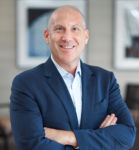By JESSICA DaMASSA, WTF HEALTH
Two of the most notable payer venture funds, Optum Ventures and Cigna Ventures, just headed up a $30 million dollar Series A funding round for Flume Health, a startup that basically builds “challenger” health plans. How did this go down? Cédric Kovacs-Johnson CEO & Founder of Flume introduces us to his company which offers providers, digital health co’s, brokers, reinsurers, and just about any other healthcare org a tech stack for creating their own hyper-niche, super personalized health plans.
The suite of services to “build-a-plan” includes things like claim processing, payments, enrollment management, digital health point solutions integration, and other API functionality – replacing the traditional TPA with tech and the one-size-fits-all plan with a new opportunity for nichey-ness that can customize coverage for patient populations based on health conditions, location, employer, and so on.
Cédric talks us through the benefit to his target client – the care provider – who, while taking on more risk anyway, may consider building their own plan to capture more premium dollars and gain better control over the end-to-end patient experience. Wait a minute – is all this “Challenger Health Plan” talk just a re-brand of value-based care? I ask point-blank and get a new buzz phrase in return; welcome to the lexicon, “Commercial Advantage.” Lots to unpack in this one including Flume’s rev-gen model and plans for growth – they’re already onboarding one new challenger plan per month!

















